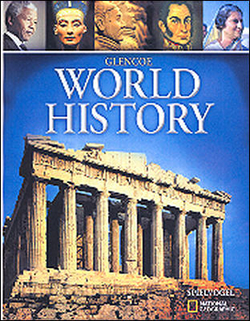Glencoe World History © 2010Chapter 1:
The First HumansStudent Web Activity Lesson PlansLife at Çatalhüyük Introduction In this chapter, students learned about the Neolithic Revolution and the rise of early farming villages. Jericho is considered the first permanent settlement, with artifacts dating its existence to about 8000 B.C. Çatalhüyük emerged about 2,000 years later and held double to triple the amount of people. Although students would consider these first settlements as tiny villages today, they were critical as stepping stones to more advanced civilizations that were to come. In this activity, students will learn about daily life for the inhabitants of Çatalhüyük. Encourage students to take the “Virtual Tour” of Çatalhüyük (also spelled Çatalhöyük) after completing this activity. Lesson Description
Students will visit an interactive Web site about the archaeological dig at Çatalhüyük. They will view various rooms of the ruins as well as the artifacts uncovered. Navigating through the Web site allows students to comprehend the magnitude of excavating an archaeological ruin. Instructional Objectives - The learner will be able to identify cultural aspects of the inhabitants at Çatalhüyük, a Neolithic farming village.
- The learner will hypothesize about the uses of various artifacts found in an archaeological dig.
Student Web Activity Answers - According to the Web site, “Çatalhöyük means ‘forked mound’ and refers to the site’s east and west mounds, which formed as centuries of townspeople tore down and rebuilt the settlement’s mud-brick houses.”
- They had murals, sharp tools, jewelry, religious sculptures, and pottery.
- The following seeds and nuts were included in the diet: hackberries, chickpeas, chaff, wheat, wild grass, acorns, lentils, and pistachio. The various types of meat included sheep, cattle, and goats. Most homes had bucrania (cattle skulls) as part of their decorations.
- Archaeologists have found thousands of clay balls, and they have no idea what they were used for. Some scientists suggested that they were used as toys, to boil water, for heating, or for warfare.
- Answers will vary. Most students will probably suggest that burying the dead under platforms in the home is the most unusual practice of the inhabitants of Çatalhöyük.
 | 
















